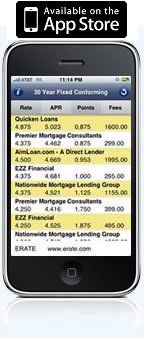Understanding Credit Cards: How To Read a Credit Card Statement
by Amy Lillard
Credit and credit cards are an integral part of our economic system today. But there is a lot of misinformation and misunderstandings about credit. In this continuing series, we examine key concepts, tips and best practices when it comes to credit cards.
(11/15/2012) Bills are no fun to receive or to read. But understanding and internalizing your credit card statement can go a long way to developing smarter spending and debt management behaviors.
Statements will vary by company, but each will contain a few key elements that you should understand:
• Annual Percentage Rate (APR): Your statement will pinpoint the exact amount of interest you pay on an annual basis, which goes into the calculation of your monthly finance charges. You can use this information to understand how much you're really paying in debt, and to negotiate lower rates to reduce your debt.
• Minimum Payment: Each cycle, your credit card company will determine a minimum payment that must be met in order to stay in good standing. This is typically determined as a percentage of your balance and finance charges. Borrowers must pay their minimum payment each month to avoid fees and increased interest, but paying more than the minimum is recommended to reduce debt and fees.
• Due Date: Submit your payment by this date in order to avoid late and other fees.
• New Balance: This reflects what you currently owe, including the money you've borrowed for purchases (principal) minus previous payments, accrued interest, and any fees.
• Payments: The last month's payment will be noted.
• Finance Charge: The amount you're paying in interest will be specified, which is determined by your credit card company's particular method of calculation.
• Grace Period: This is the amount of time you have (typically 20-25 days) before a credit card company charges interest on new purchases. Knowing this helps you avoid unnecessary finance charges if you choose.
• Limits: Your credit card limit or credit line is the maximum amount you can borrow. Spending beyond this limit will incur fees and potentially a hit to your credit report.
• Fees: Specific fees charged by your credit card, including annual, late, and cash advance fees, will be noted.
• Transactions: Pay close attention to this list of purchases, transfers, cash advances and other transactions to ensure there are no errors. Report any mistakes or unauthorized transactions immediately to the contact information noted on the statement.
• Rewards Points: If you have a card that accrues airline miles or other rewards , this will be a tally of points earned and available for redemption.
For Additional Reading:
Reading Your Bill: http://www.federalreserve.gov/creditcard/flash/readingyourbill.pdf
Deciphering Your Monthly Statement: http://www.bbb.org/credit-management/new-to-credit/credit-101/deciphering-monthly-statement/index.html
How to Read a Credit Card Statement: http://www.aie.org/managing-your-money/credit-cards/How-to-Read-a-Credit-Card-Statement.cfm
Other related articles:
Understanding Credit Cards: What are Balance Transfers?
Understanding Credit Cards: Credit Card Fees
Understanding Credit Cards: Finance Charges Explained
Understanding Credit Cards: Choosing a Card
Understanding Credit Cards: Managing Interest
Understanding Credit Cards: How to Qualify for Credit Cards
Understanding Credit Cards: The Credit Bureaus
Maintaining credit health much like maintaining physical health
Understanding Credit Cards: Who Uses Credit Scores?
Understanding Credit Cards: The 5 Components of a Credit Score
Understanding Credit Cards: Checking Your Credit
Understanding Credit Cards: What is Credit?
Understanding Mortgages: What is a Credit Score?
Fannie Mae & Jumbo Mortgage Rates
Just One Click! = Current Rate Chart

Start by selecting your state

Amy Lillard
The ERATE® Resource Guide to No-Closing-Cost Refinancing
Principal Reduction: New Programs, More Controversy
Understanding Mortgages: Mortgage Paperwork
Understanding Mortgages: Types of Mortgages
Understanding Mortgages: How to Get a Mortgage
Understanding Mortgages: Buy or Rent?
Understanding Mortgages: Working with a Real Estate Agent
Understanding Mortgages: Working with a Real Estate Agent
Refinancing: Selecting a Loan

- Mortgage Program Options
- Interest Only Mortgage
- 100% Mortgage Financing - No Down Payment
- Mortgage Rates Comparison
- Search for Mortgage Rates
- No Costs Mortgage Refinancing
- 2% Rule - Refinancing Mortgage
- Yield Spread Premium
- Prepayment Penalty - Mortgage Refinancing
- What is APR and how is it calculated?
- Private Mortgage Insurance - Refinancing
Moving Ahead With Your Refinance
Get the Updated and Improved Mortgage Rates App from ERATE.com
FREE Mortgage Rate WidgetsYour State's Rates or National Rates Get this Widget for any State you want


